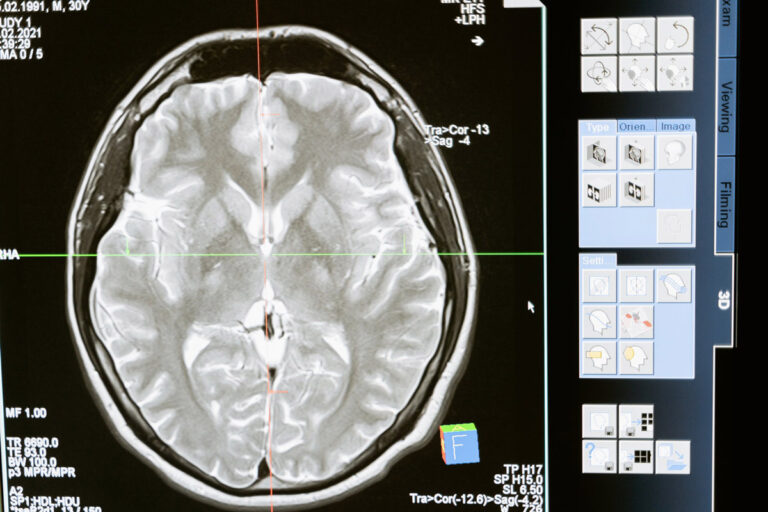Revolutionary brain implant helps blind patient see without eyes for the first time in 16 years
Scientists are at it again, this time in Spain where they have tested out a new brain implant that has allowed a blind patient to ‘see’ without eyes. According to the NHS, there are almost two million people living with sight loss in the UK. Thanks to this world-first experiment, there could be a possible way to return the gift of sight to blind patients without the need for their eyes—sounds crazy, we know. However, innovative implants have proven successful for many areas of the brain; they have enabled paralysed people to write with their minds, successfully helped treat depression, and even let us communicate with machines without talking. This latest brain implant is yet another scientific breakthrough that might just knock sliced bread off its pedestal. Here’s how it works.
A brain implant that is just 4 millimetres wide directly stimulated the visual cortex of a blind patient, and reportedly gave her the ability to see shapes and colours again without using her eyes. An “artificial retina,” according to New Atlas, was placed on a pair of glasses, light was then directed in front of them which was then processed into electrical signals. The signals from the light patterns were picked up by a series of micro-electrodes, each 1.5 millimetres long, implanted in the patient’s brain, thus allowing her to ‘see’ without the use of her eyes at all.
By penetrating the brain, micro-electrodes can both stimulate and monitor the electrical activity of neurons in the visual cortex, located within the larger cerebral cortex—think Google Glass with the slight twist of being connected to your brain.
In 2020, a larger version of this setup was successfully tested on primates, using 1,000 electrodes, although the animals part of the study were not blind. The initial testing of this experiment, conducted by researchers at Miguel Hernández University (UMH), was carried out on a completely blind 57 year-old woman who had previously not been able to see for 16 years. After a short training period, in which she learned to interpret images that the device produced, she was able to identify letters as well as the silhouettes of certain objects. After six months of use, the device was removed from her brain.
In a research paper led by Professor Eduardo Fernández Jover and published in The Journal of Clinical Investigation, the scientists behind the experiment wrote, “We consistently obtained high-quality recordings from visually deprived neurons and the stimulation parameters remained stable over time.” They further commented on the patient stating, “The patient could also spot some letters and even recognise object boundaries.”
For those of you who are feeling squeamish about even getting an eyelash in your eye or take issue with anything being put near your brain at all—having tiny little electrical devices stuck to your brain does sound scary—fear not, however, as researchers have claimed that implanting electrodes into a patient’s brain does not affect the area of the brain located around the visual cortex.
For starters, the electrical arrays are placed on the surface of the brain, not in it. Furthermore, the artificial retina does not stimulate non-target neurons, meaning the rest of your brain is not affected by the device. So, as far as implants go, the technology seems to be as non-invasive and non-obstructive as something artificially put in your brain can be. And no need to worry about your brain becoming more fried than your favourite takeaway—the device requires a very low level of electrical activity in order to work, compared to other electrical implant arrays.
While this tech is new and still requires more testing—and it’s actually not the very first time a patient has been treated by a revolutionary device to restore sight—the prospect of it having a mass rollout to the public is promising to say the least. This experiment is much like one carried out in May 2021, where a 58-year-old man from Brittany in northern France had his sight partly restored by a form of gene therapy which also used goggles to capture images with the help of pulses of light to control the activity of nerve cells. Though the patient’s vision was not completely restored, and he still has difficulty recognising faces, his vision did improve with further training. The results of this treatment are expected to be long-lasting too.
The study, which was initially published in Nature Medicine, explained how the first patient was treated as part of an international study investigating the safety and tolerability of the treatment, and was followed by a further two more who were treated in London.
Professor José-Alain Sahel from the University of Pittsburgh School of Medicine, who co-led the study, told The Guardian: “Initially, the patient couldn’t see anything with the system, and obviously this must have been quite frustrating. And then spontaneously, he started to be very excited, reporting that he was able to see the white stripes [of a zebra crossing] across the street.”
This was the first demonstration of so-called ‘optogenetic therapy’ in humans. The method relies on optogenetics as a clinical treatment, which basically means changing neurons and nerve cells so they can pass on electrical signals when exposed to wavelengths of light. A somewhat similar system is being developed at Australia’s Monash University.
As a breakthrough in the field and a big step in medical advancement, this could be the solution to fixing visual impairments and opens the doors to all kinds of possibilities for those 360,000 registered as blind or partially sighted. There’s a very good chance that this is the device to aid blind people to see again.





